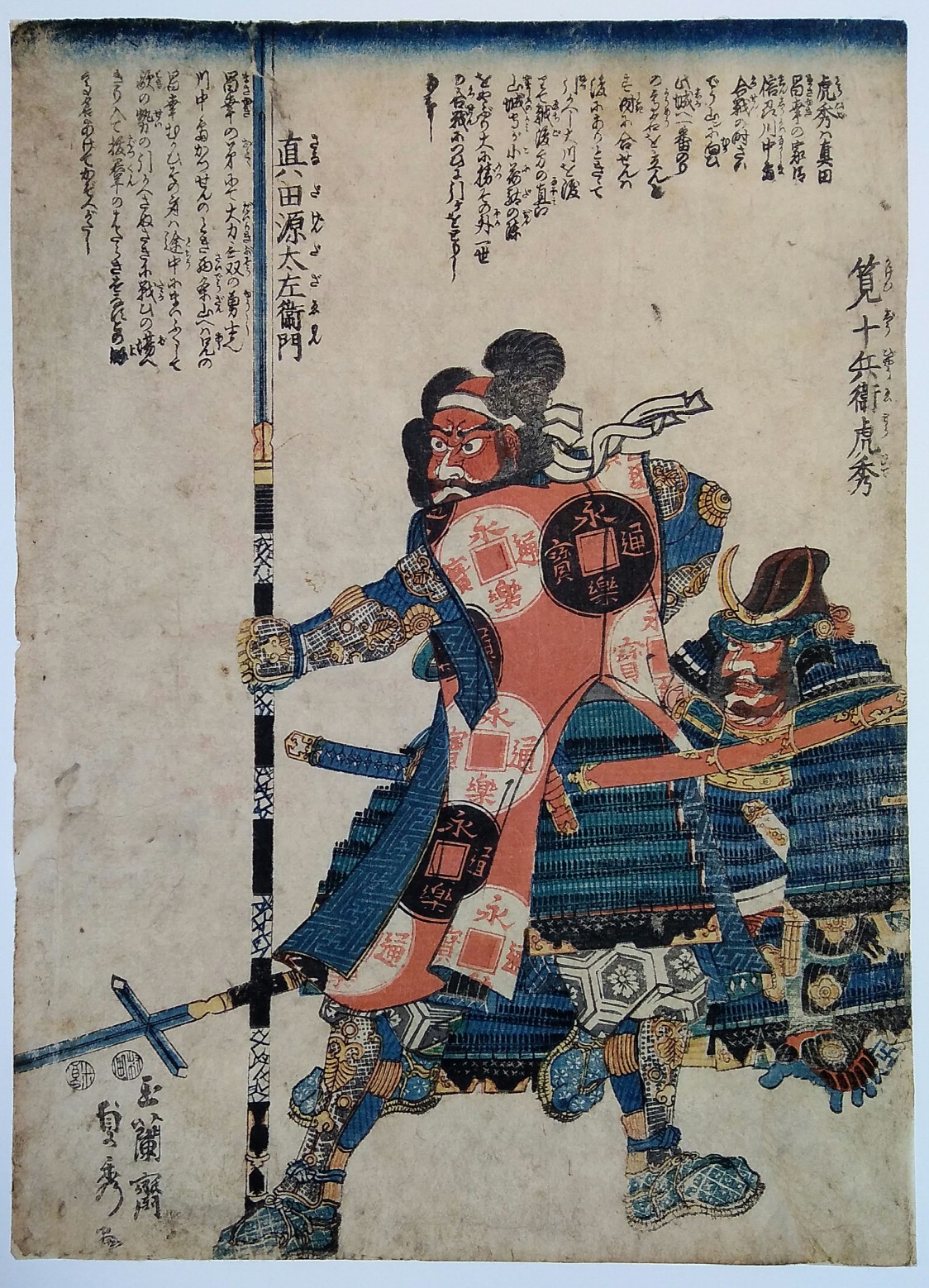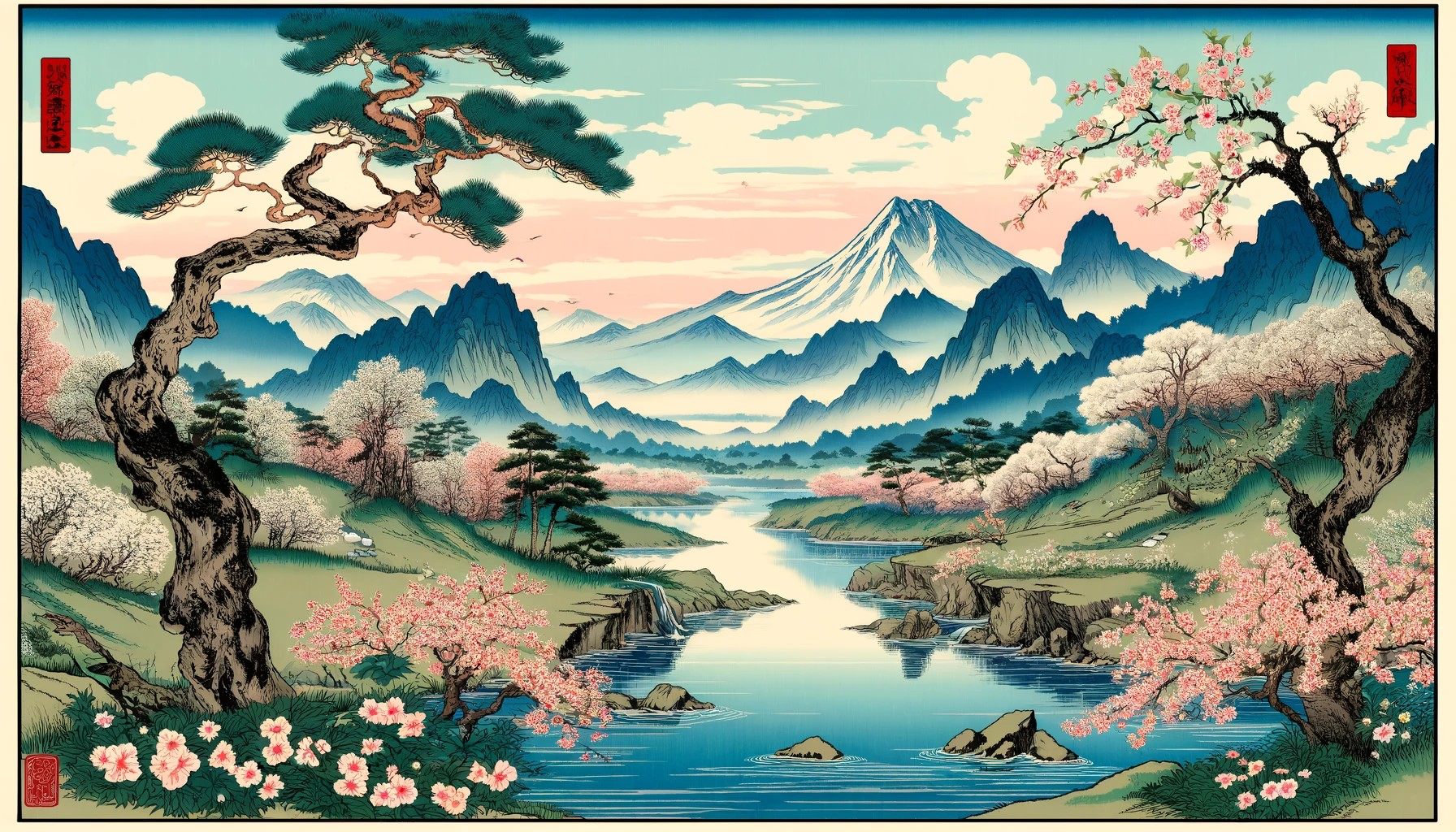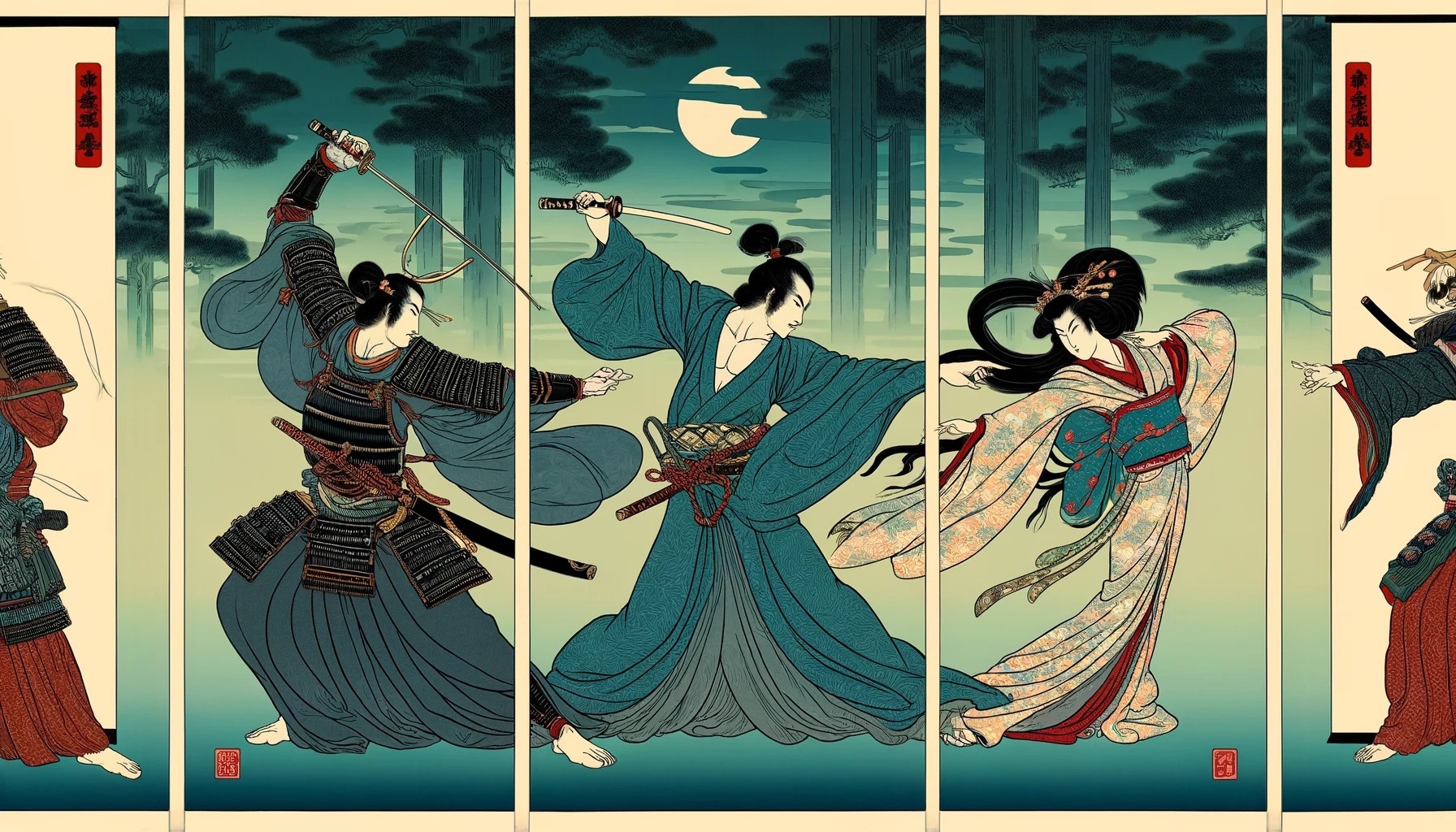Utagawa Sadahide (1807 ~ 1873)
Utagawa Sadahide (1807-1873), born Kenjiro Hashimoto, was a renowned ukiyo-e artist during
the Edo period and one of Kunisada's most talented pupils.
Working between Edo (modern-day Tōkyō, 東京) and Yokohama, Sadahide became known for his prints capturing the
urban transformation of Edo, historical events such as the arrival of Commodore Perry, and beautiful portraits of women
(bijin-ga, 美人画). His compositional style was heavily influenced by Western art, often using extensive perspectives and
sometimes depicting subjects from a bird's-eye view.
During the period of Japan's opening to international trade, following the Convention of Kanagawa in 1854 and the Ansei Treaties (安政条約)
of 1858, Sadahide produced numerous works known as Yokohama-e, depicting Westerners and scenes of modern industry in Yokohama. These prints
illustrated curious machines and imported fashions entering Japan, as well as imagined renderings of the foreigners' homelands.
Sadahide is also remembered for his guidebooks on Yokohama, aimed at teaching the habits of foreign residents and dispelling myths about them,
while also showing the Japanese people what they could learn from Western customs. His prints, sold by booksellers and vendors, displayed an
effective use of Western perspective and chiaroscuro.
In 1866, Sadahide was one of eleven Japanese printmakers who exhibited their work at the Paris Universal Exposition, where he received the Légion d'Honneur.
He was also part of the ukiyo-e delegation of the Tokugawa Shogun (徳川将軍) at the same exposition, solidifying his reputation as one of the best artists in
Japan and showcasing his work to an international audience.

Sanada Gentazaemon and Kakei Jūbei Torahide


